An everyday fish pulao is a wonderful dish to have in one’s repertoire. It makes a nice change from fried and curried fish. Like many if not most Indian home cooks, I cook from instinct, adding flavours and seasoning without always adhering to recipes and measurements. Cooking over time, one develops a sense of which ingredients complement each other and how much needs to be added to achieve a certain flavour. Food memory has a lot to do with this way of cooking. Anyway, sufficeth to say that this fish pulao recipe was born out of an ‘idea’ of what I expected in terms of look and taste from a fish-based pilaf.
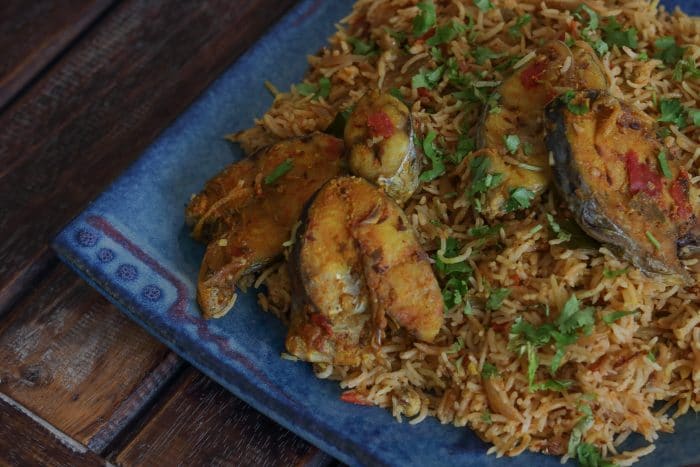
A pulao/pilaf is not a biryani in that it has fewer spices and is not layered. It is a simpler, less flamboyant yet equally delicious rice and vegetable/meat dish that’s more suited to everyday meals. Pulao are lighter and more delicate and can be made in a pinch with whatever ‘s in the fridge/pantry. No special purchases are required for this fish pulao, except for the fish itself.
All about the fish
Those of you, who know your fish will recognise from the pictures that I’ve made the pulao with surmai or seer fish – a meaty, white fish that only has a central bone and a few on the side. I’d had the fish sliced for curries so the bone ‘s still there. If you’re not comfortable dealing with them, then have the fish filleted and cut into thick chunks. This way, the bones are left out altogether and the pieces are thick enough not to disintegrate during cooking and serving. The fish must be handled gently to avoid tearing the soft flesh. Once the pulao is cooked, remove the fish on a plate, spoon the rice into the serving dish and arrange the fish on top. Choose any medium-large, firm-fleshed, white fish.
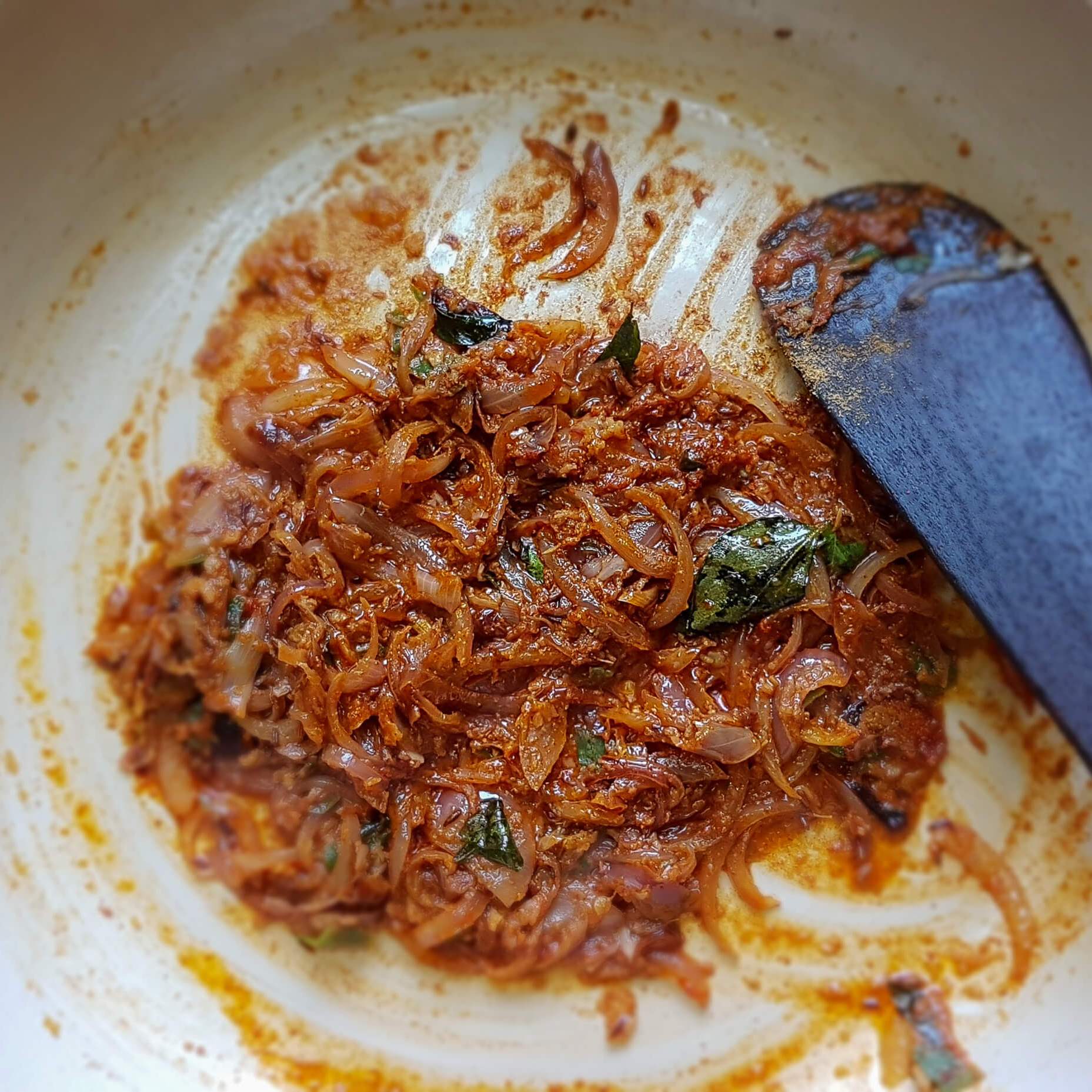
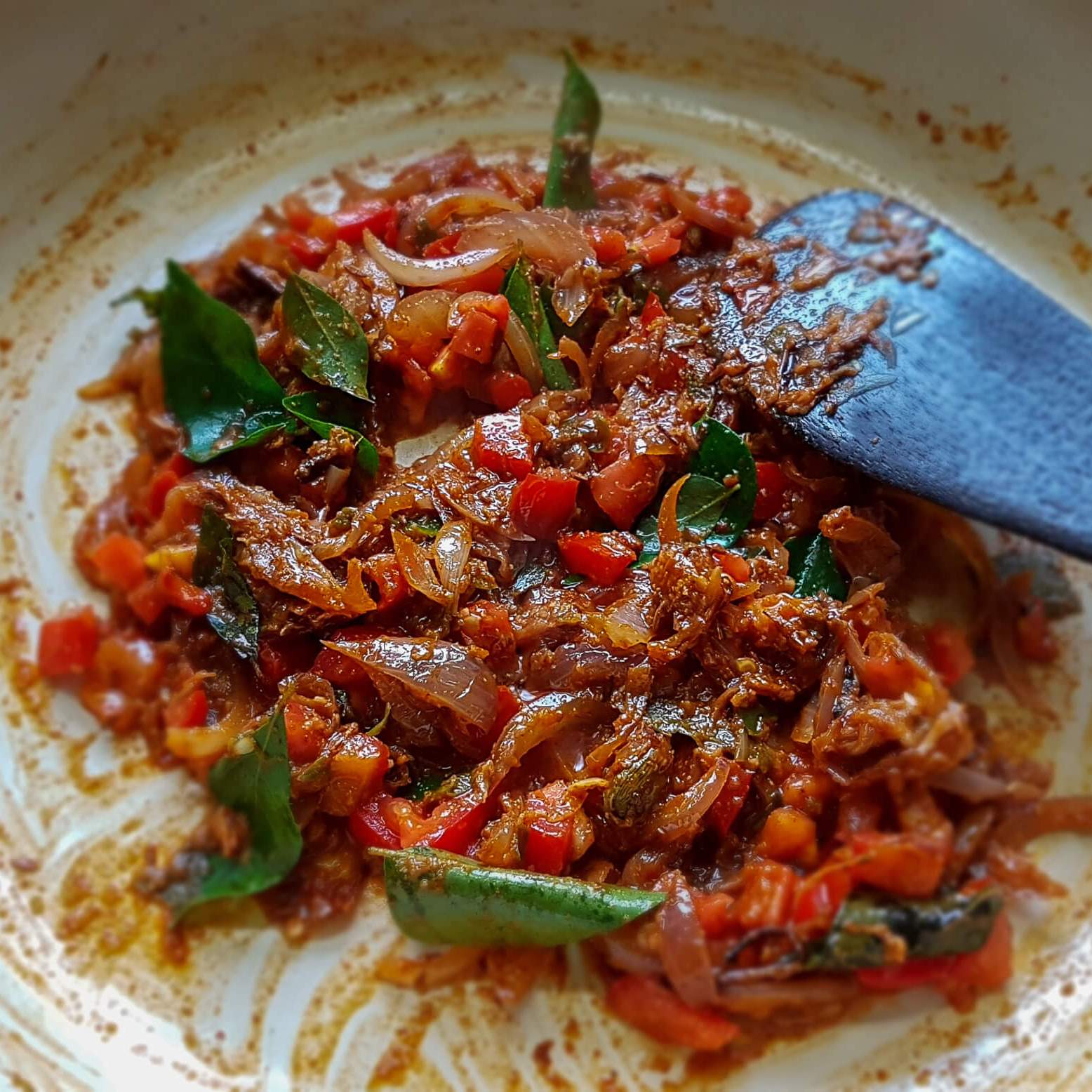
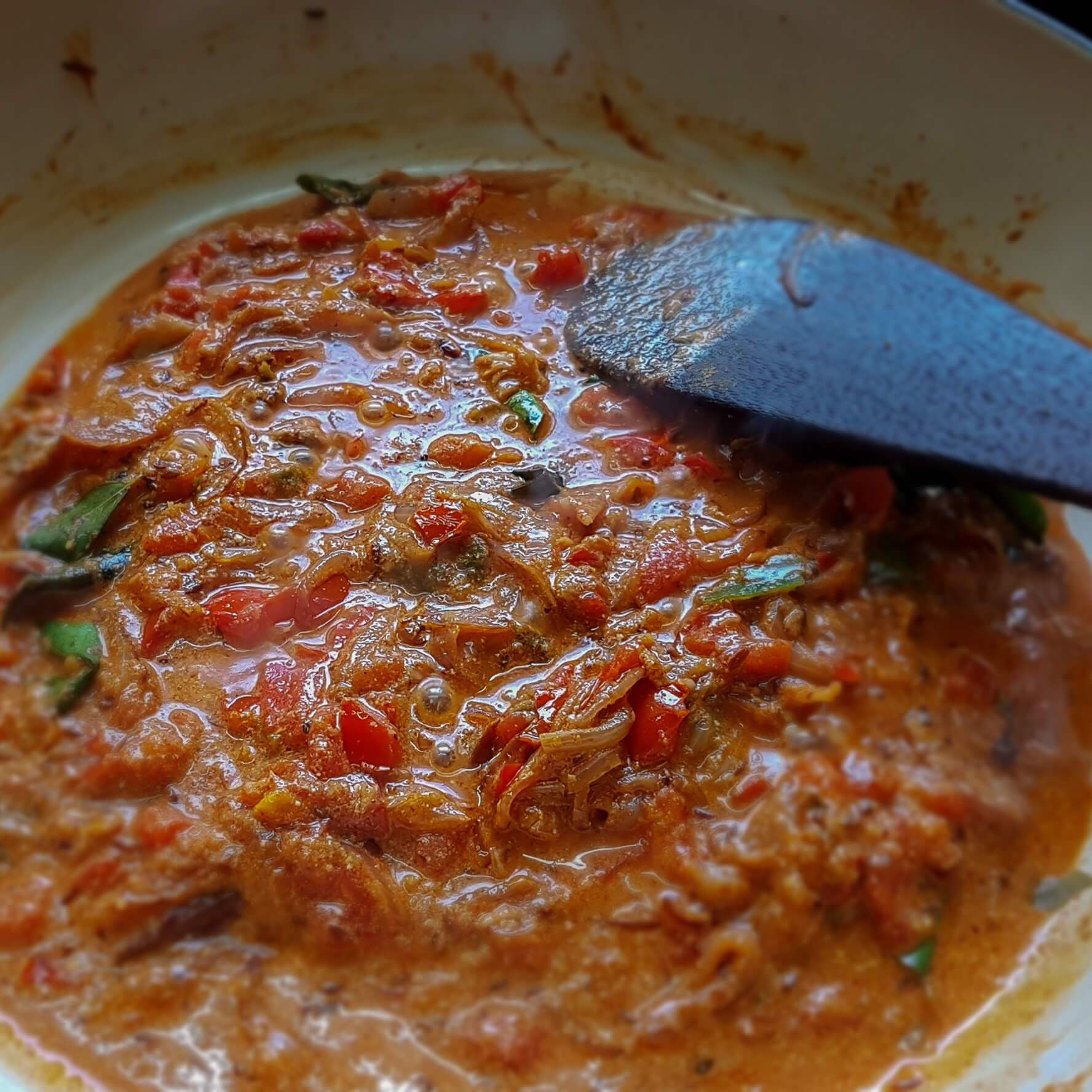
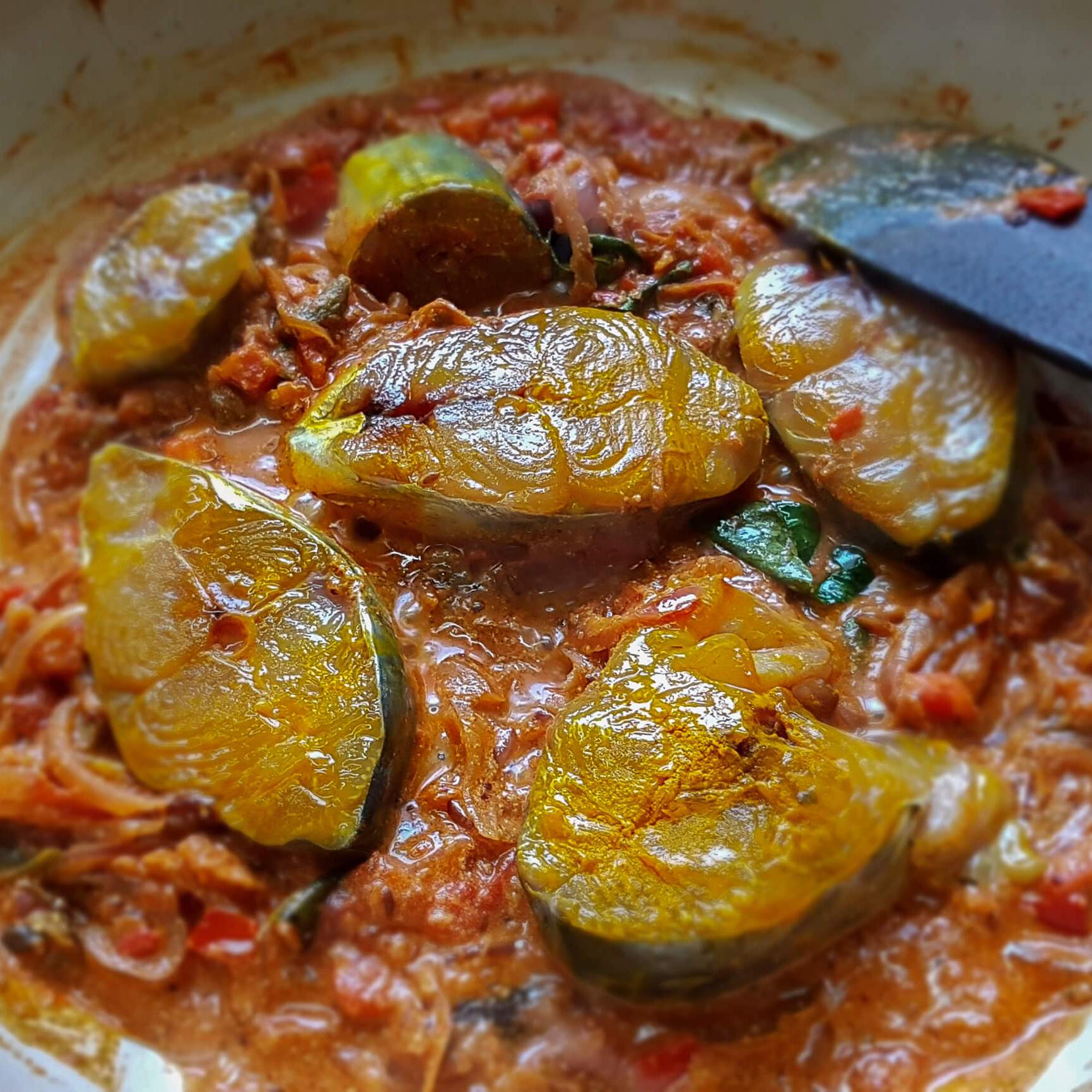
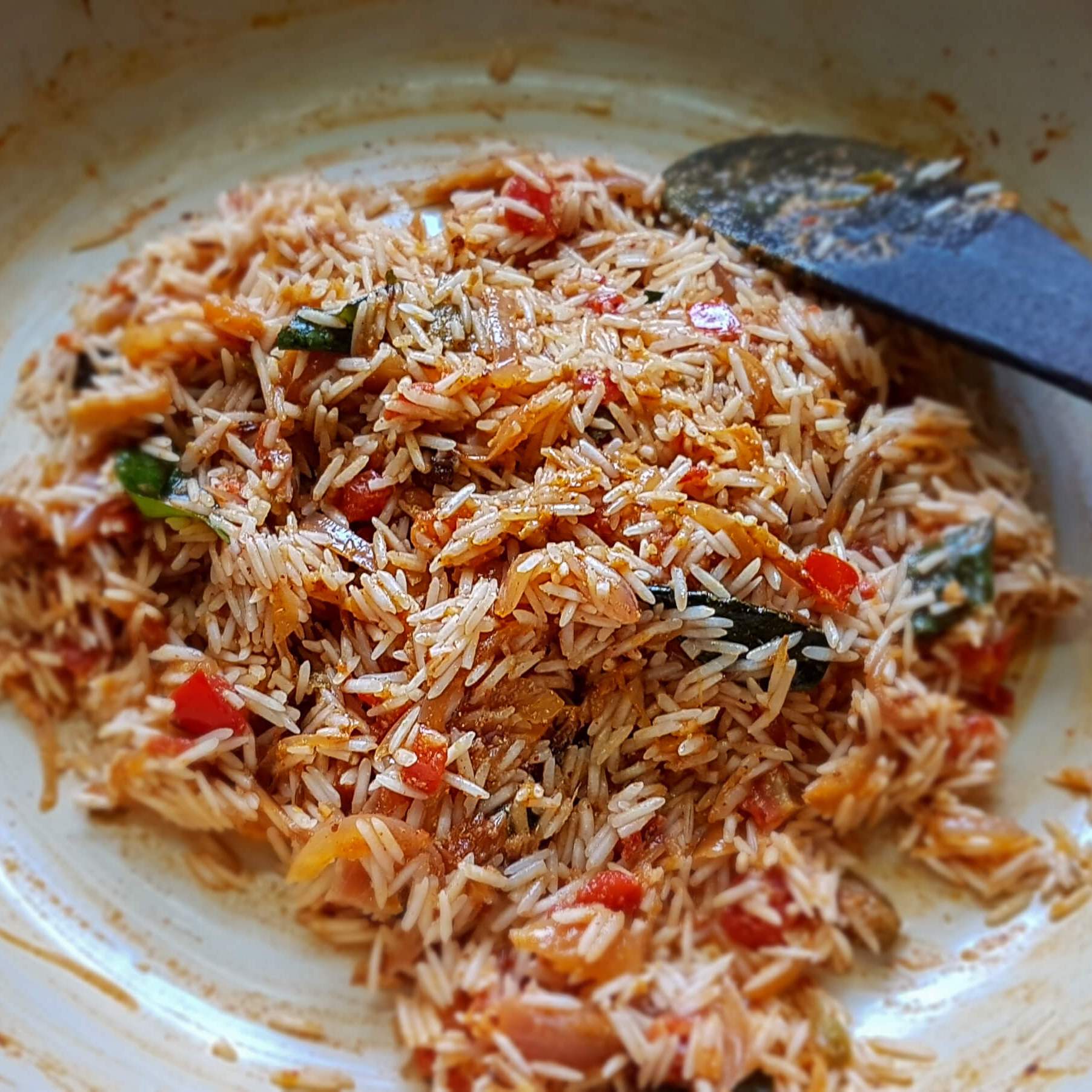
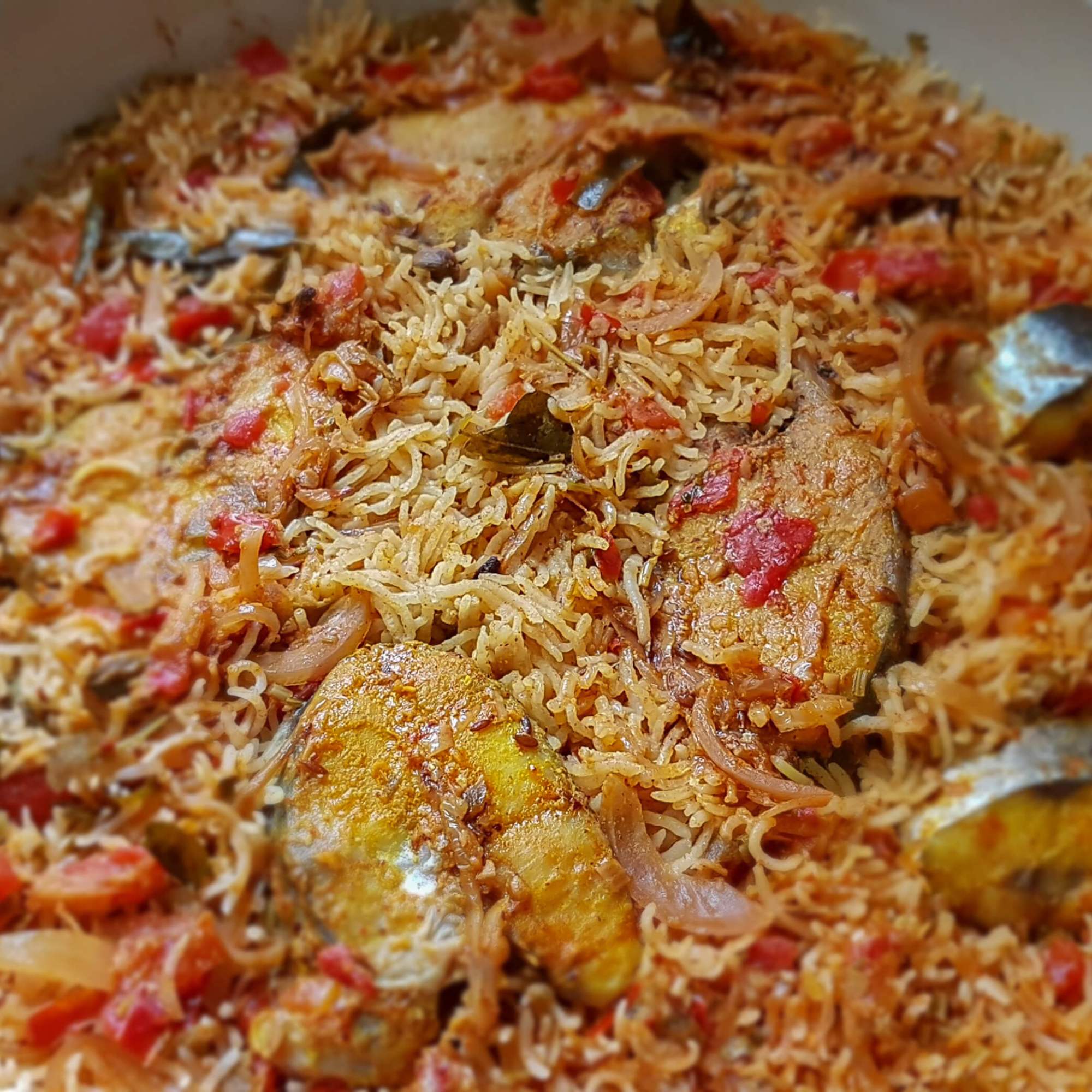
Oftentimes you’ll find that the rice in the pulaos and biryanis served in restaurants lacks flavour and appears to merely be saffron or turmeric-tinted rice. This is probably because the meat/fish/vegetables were cooked separately from the rice and we’re just put together at the time of serving. They must (and I cannot stress on this enough) be cooked together to build umami and that savoury pulaos flavour that we love so much. Only then will the scents, tastes and nuances of all the ingredients permeate the fluffy grains of rice. A good pulao should be such that the rice should be flavourful enough to eat on its own, even without the meat/fish/vegetables. If you have fish stock, you can use that to cook the pulao.
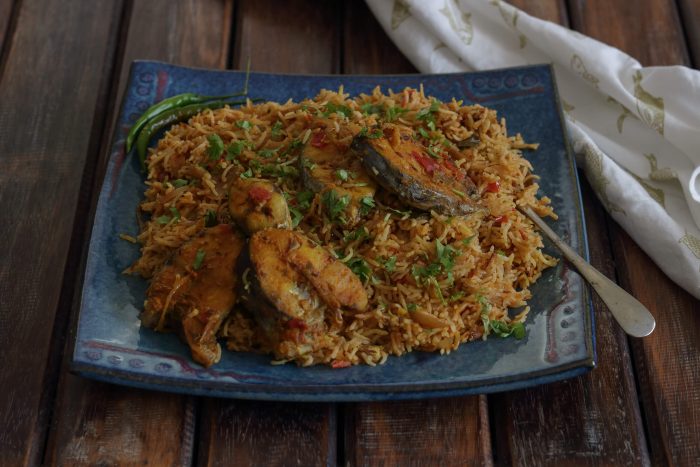
How to cook perfect pulao rice
In a pulao/pilaf or biryani, the rice must be cooked perfectly and the grains must remain separate. Lumpy, overcooked rice or hard, unevenly cooked rice can ruin the most celebrated biryani and pulao. For this it is essential to soak the long-grained basmati rice for at least 20 minutes prior to cooking. Secondly, it must be toasted well before water is added to cook the dish. Read more about how to cook your pulao rice to the perfect texture, on my post on Seafood Coconut Pulao .
This fish pulao makes a perfect one pot meal and is best enjoyed warm, with a few papads and a cucumber and onion kachumber on the side.
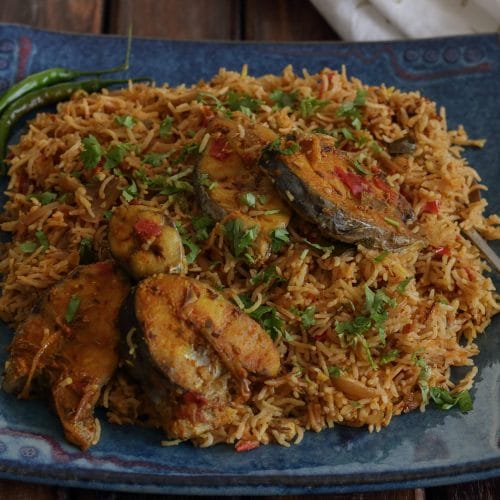
Fish Pulao
Ingredients
- 4-6 2 cm-thick slices of firm, white fish
- 175 g basmati rice
- 2 medium onions, thinly sliced
- 3 fresh, green chillies, crushed
- 1¼ inch piece of ginger peeled and crushed
- 5 cloves of garlic peeled and crushed
- 2 small tomatoes, chopped
- 50 g natural, plain yoghurt, whisked
- 10 curry leaves
- 1 tbsp lemon juice
- 1 tbsp fresh coriander, chopped
- 1¼ tsp Kashmiri chilli powder
- ½ tsp turmeric powder
- ¼ tsp fenugreek seed or methi powder
- 1½ tsp coriander powder
- ½ tsp garam masala
- 1 tsp cumin seed
- 1 inch piece of cinnamon
- 3 green cardamoms
- 3 cloves
- 1¼ tbsp ghee
- Salt
Instructions
- Smear the fish with turmeric and a little salt and set aside.
- Wash the rice and soak in plenty of water for 20 minutes. The drain in a sieve.
- Pour the ghee into a wide pan on medium heat and gently saute the whole spices – cinnamon, cloves, cardamom and cumin for 20 seconds.
- The add the sliced onions and fry till they are translucent and lightly golden. Lower the heat and add the curry leaves, crushed ginger, garlic and green chillies. Saute gently for a minute or two taking care not to burn the garlic.
- Mix the ground spices except the garam masala in a tablespoon of water and add to the pan. Stir and cook for a minute.
- Tip in the tomatoes and season with salt. Cook the tomatoes till they become pulpy – 3-4 minutes. Now add the whisked yoghurt and lemon juice and cook the mixture for a further 4-5 minutes till you see the ghee separate on the edges of the spice mixture.
- Gently place the fish slice into the pan and coat with the mixture. Do not stir too much and let the fish sear for no more than a minute on each side. Remove the fish onto a plate and reserve.
- Now put the drained rice into the pan, stir well to coat with the masala mixture and saute for 5-7 minutes till well toasted. Mix in the garam masala, spread the rice evenly around the pan and place the fish slices at even distances from each other.
- Pour water to just cover the surface of the rice and fish. Too much water will make the rice squishy.
- Cover the pan with a tight-fitting lid, keep the flame on medium and cook for 20 minutes. After 20 minutes, switch off the flame, move the pan from the stove/hob without removing the lid and allow it to rest for 10-15 minutes. Finally, take off the lid, remove the fish pieces, fluff the rice gently with a for, transfer onto a serving dish, place the fish slices on top and serve.





2 Comments
Abhijit Mukhopadhyay
March 31, 2021 at 7:58 pmMouthwatering recipe
quichentell
April 9, 2021 at 11:21 amMany thanks Abhijit ☺